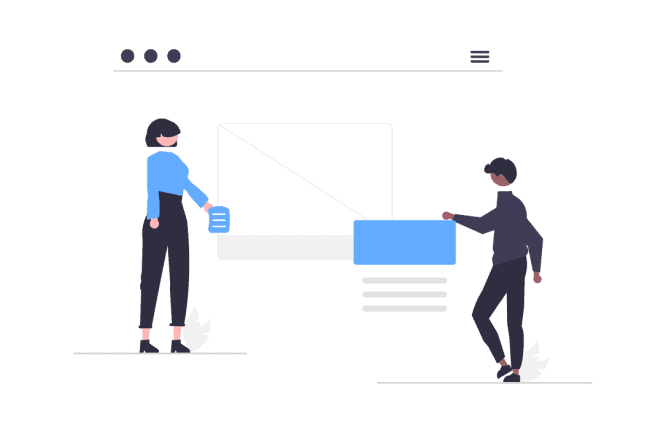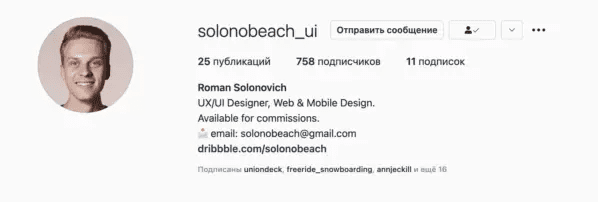How not to apply for a UI / UX or Product designer job
Right now I am looking for a UI / UX designer for the Zenclass product team. Before that I hired DELO to the studio many times. I have accumulated a few observations that may be useful to a designer in his job search.
Some actions can look like arrogant muddiness. It looks like it’s inevitable. Kindness and compassion at all stages of the process can turn it to hell. The main reason is that with a competitive salary, there are a lot of responses to vacancies. The very first experience of hiring a designer turned into chaos for me, and as a result, I thought about how to streamline and automate everything. I wrote a short note about this.
The bundle of services I currently use: Trello + Zapier + Mailchimp + Calendly. As a result, I do not directly contact designers until the very stage of the interview, which reaches an average of 2%. This is a necessary measure: in order to somehow smooth it out, I write letters as open as possible, in which I explain why I have to use such a stereotyped approach, and not an individual one.
Hiring is part of the job. Regardless of the close contact with people, I have a choice whether to do it quickly or not. If out of 10 bad portfolios I can accurately identify 7 and still skip 3 diamonds, then reducing the processing time from 20 minutes to 20 seconds is worth it.
It took me almost a working week to sort through the work of hundreds of designers. Without optimization, it would take several months.
But stereotyped answers are a small problem compared to stereotyped thinking. High speed forces you to form patterns and make decisions based on them. They are not universal, but I am sure that many employers are forming similar ones.
Fast solutions – natural adaptation to a large flow of information in one format
Portfolio
I never read a response until I look at the portfolio. It takes me the first two seconds to scan the portfolio with my eyes, in 80% of cases, close it and immediately reject the application.
2 seconds
…
What should I do so that I don’t close it?
7 yes
Show pieces of work on miniatures. Beautiful logos or texts don’t mean anything. Show the best piece of this work. The cover on Behance should perform a function similar to a dribble shot – to show the tastiest. I almost never open the same type of covers that graduates of courses and design marathons draw.
Use mockups. Mobile phone or desktop mockups with a piece of the interface help to understand what’s inside. Often I don’t open a job simply because I don’t know if something is relevant there or not at all.
Show off working with major brands. If you have at least one real job for a large well-known business, then it will surely keep me on your page. For me, this is a sign that you can pass a fairly strict selection.
Make a personal website. This is almost always a plus. It immediately becomes interesting for me to see how you did it from a technical point of view, how you present information. When responding to the latest vacancy, 8 designers showed their sites, six of them I invited for an interview.
Submit a relevant portfolio. If I am looking for a UI / UX designer, open a portfolio and see 4 landing pages and 2 logos on the first screen, then with a high probability I will close the tab without trying to scroll further. Perhaps while you are looking for UI / UX work, you need to reorder projects in your portfolio. Or send a link to one specific work.
Focus more on UI than UX. I can understand the level of interface design only if I talk and look at solving real problems. And the UI level – at a glance at the work. In the portfolio, I am looking for a good UI, so that later among such designers I can find someone with a good UX. I feel that this point is especially controversial, but diagrams and prototypes without a detailed immersion in the case do not tell me much, and the text description in the case is not enough.
Show reviews from clients and employers. Especially if you are fortunate enough to work with the stars in the industry – for example, with someone from the top of Tegline. High position next to a major brand type “Mikhail Ivanov, head of the digital business department at Beeline-Bank” works great for me too. Of course, the review must be real. A little trick – you can write a review yourself, and just ask the person to certify it with a signature.

3 no
Do not send resume with hh or in PDF format. I don’t even open that. And if I open it, then later I regret it. At the same time, Notion, Miro or Figma are the norm.
Do not publish weak works. I myself tried to keep a bunch of work on Behance so that I could see my professional growth. But as an employer, it doesn’t matter to me who the designer was and how he got to his current state. It is important to me what he can do now. One weak job and I close the tab quickly.
Do not show educational and fake projects. Redesign of the Microsoft website, another portfolio of Anton Corbein, the website of the Swiss architectural bureau. All this is maximally divorced from reality and does not tell me anything about the level of a specialist. I need to see how you solve real problems.
Response aka cover letter aka CV
There have been a few cases where cover letters for average portfolios convinced me to schedule an interview, and I ended up taking a fresh look at the designer. But sometimes even a good portfolio would fly into bounces due to poor response text.
How to apply for a vacancy so that you will be answered
You can make mistakes. A couple of typos, no comma – little things that do not spoil the impression. Incorrect quotes or dashes are more important. Perhaps this is my personal problem, because I often have mistakes and typos, but I follow dashes and quotes ?.
You can’t be poor. I don’t need to know that you are a budding designer, or that you are in a difficult life situation, or that you really dislike your job. This is, of course, human, and I have empathy, but I am looking for a designer who will influence the life of the whole team, I cannot consider your personal problems sufficient to risk others causing problems. As a result, it is unpleasant, and makes you feel like a soulless bastard, which usually does not have a very positive effect on the assessment of the text.
You can talk about personal things. But briefly. If you mention something not working, but important for you, I will better understand who I am reading about. I like it when a person denotes himself with a couple of strokes. Tell us that you have great kids, or that you sometimes DJ at parties, or play football, or even love beer. All this works for me as if I had already met a person a little, I see openness, and I want to be open in response. You can leave a link to the page on social networks. Before the interview, I google the person anyway – I’m sure many people do too.
You need to write succinctly. An infostile is encouraged in a cover letter. Short, clear, understandable messages. If something can be told in the form of a list, it will make it easier to understand.
The format cannot be ignored. If I left two fields in which I asked to talk about projects and education, then this is important to me. There is no need to ignore the format that is convenient for me to evaluate and write something of my own in these forms. This causes irritation and the feeling that the dialogue is not working out.
You need to study the employer. Give your comment on the vacancy text, tell me right away what you think is strong in the design of our service. If you are confident, you can point out the cons. When you read this, you understand – the person is attentive, studying the materials. I want to reciprocate this.
You can praise. Whoever says anything, and when they praise the company, they praise you as a specialist, they say how great it would be to be in such an interesting team – it captivates. Of course, it is easy to overdo it here, fall into flattery, and then it will suddenly turn from a plus into a minus.
If you also hire employees, share your observations. What distortions do you have? How do you simplify your life?
UPD. Guys, please do not need so much negativity. I realized that I had written in too dry language, because of this, the tone of the article is perceived much harsher than it sounded in my head, the opposition between employer vs. designer, which I didn’t want either. I also tried to emphasize that this is my personal experience, but in the end the wording looks as if I’m not saying advice, but explaining how I like it.
All this does not look as it was intended. At the same time, in addition to the form that is unsuccessful for this resource (and maybe even in general), there are useful tips here that will help designers make a portfolio that will attract the attention of employers, and write a cover letter that will help them get a job.
In general, I didn’t want to offend anyone, I didn’t want to upset anyone. I will not delete any more. If you can see the benefit behind this form, and do not start aggression towards me in the comments, I will be grateful.
Source: vc.ru


